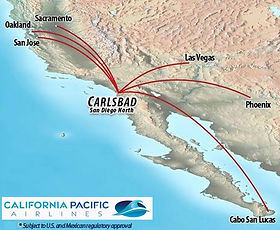Main Menu
(Click above to view FULL Menu)
"Half a truth is often a great lie."
Benjamin Franklin
~ OUR FUTURE IN PHOTO ~
In Production Mid 2021 Now in Delta has 75 Delivery's Production
on order for SkyWest has
2019 delivery 7 On Order

2019 Paris Air Show Update – June 19, 2019
Mitsubishi announce it is re-branding the MRJ 70 to SapceJet 100 and MRJ 90 to SpaceJet 90. Additionally, both jets deliveries will be postponed to allow both jets time to complete the final certification testing over the next few months.
Mitsubishi made this decision based on the Regional Jet Market shift over the last year. As a result it has been shown MRJ 70 specifications were simply too small for the U. S. fast growing regional marketplace changes. Lastly, the SpaceJet 100 is ideally suited for the new D-III Airport McClellan-Palomar and SkyWest still has an open 100 unit order with Mitsubishi for this class of jets. See below for the revised differences between the MRJ 70 and the SapceJet 100:




Bombardier Aerospace
Delivery Schedule:
Global 7000 Mid 2018
Global 8000 Mid 2019

April 30, 2015 - Kimley-Horn's CRQ Master Plan project manager, Vince Hourigan, confirmed CRQ's new runway options would be designed to accommodate the new $74M Plus Bombardier business jets now on the drawing board.
Conversely, Mr. Hourigan's statement must also be interperated the above and below commercial jets will also be supported since they require a shorter runway for takeoff and most of these have a wingspan considerably less than the Bombardier future business jets. Additionally, the latest CRQ 20-Year Master Plan eliminates the wingspan limitations and it becomes a none issue. The plan moves the runway 129 feet and the taxiway 14 feet north. This should allow the airport to meet the FAA 400 feet minimum runway center line to taxiway center line separation requirement.


MTOW = Maximum Take Off Weight
CRQ's proposed extended runway is project to be a minimum of 5,697 feet - 4 feet shorter than John Wayne.
v
Aircraft Runway Requirements

FEDEX now has a 312,000 ft distribution center in Oceanside
and 119 757's in its fleet. UPS has 75 757's in its fleet of aircraft.
MOST OF THE ABOVE REQUIRE LESS THAN A 5,701 FOOT RUNWAY
Most of the above planes fly in and out of John Wayne today
Surely, the above must all be only speculation!
Not when all the facts are known.
San Diego County and California Pacific Airline were working together to use CRQ as a base of operations
Starting in 2009, California Pacific Airlines (CPA) and the County of San Diego (County) embarked on a proposal from CPA to use CRQ as its base of operation and would conduct six flight operations per day (three morning, three night) and projected 700,000 annual passenger --- approximately 7 times today's CRQ annual 100,000 passenger load. Initially CPA would fly a Design Class C-III Embraer E170, a 72 seat plane and as schedules increased CPA would also use the larger Design Class C-III Embraer E195, a 96 seat plane. All along the County was accommodating to the proposal and committed to making changes to allow the CPA aircraft to maneuver around the B-II airport, an airport that does not have the required FAA centerline to centerline taxiway and runway distance. The FAA required distance is 400 feet to allow an airport to accommodate Class C-III aircraft. Reportedly, CRQ's centerline to centerline is only 297.5 feet.
Excerpt from a CPA document prepared for the FAA in 2012:
"... The evaluation completed for this application determined that although the distances for the “Taxiway Centerline to a Fixed
or Movable Object” and the “Taxiway Wingtip Clearance” do not meet standards for the C-III aircraft these issues would be
resolved once the existing compass rose has been moved. The County of San Diego has confirmed that the compass rose will
either be relocated or removed. ..."
It must be noted, it is not understood what was meant by:
"... although the distances for the “Taxiway Centerline to a Fixed or Movable Object” and the “Taxiway Wingtip Clearance” do not
meet standards for the C-III aircraft these issues would be resolved once the existing compass rose has been moved."
The CRQ's runway centerline distance to taxiway centerline distance would still be more than 100 feet below FAA minimum for Design Class C-III aircraft.
After working on the project for over three years, CPA failed to achieve its FAA Air Worthiness Certificate.
The County's support for CPA and many other documented statements from San Diego County representative over the years point to the direction the County is planning to take CRQ. A direction, as any community surrounding a commercial airport will attest, is detrimental to their citizens quality of life, health and safety. Additionally, the community quickly loses its property value.
CPA's E 170 - Wingspan 85 ft. 4 in.
CPA's E 195 - Wingspan 94 ft. 3 in.

Douglas DC 9 - Wingspan 89 ft. 5 in.
The DC 9 Wingspan is only 4 ft. 1 in. more than the Embraer E 170, but the E 195 wingspan is 4 ft. 10 in. more than the DC 9
~ Click photo for the full Wikipedia facts ~

